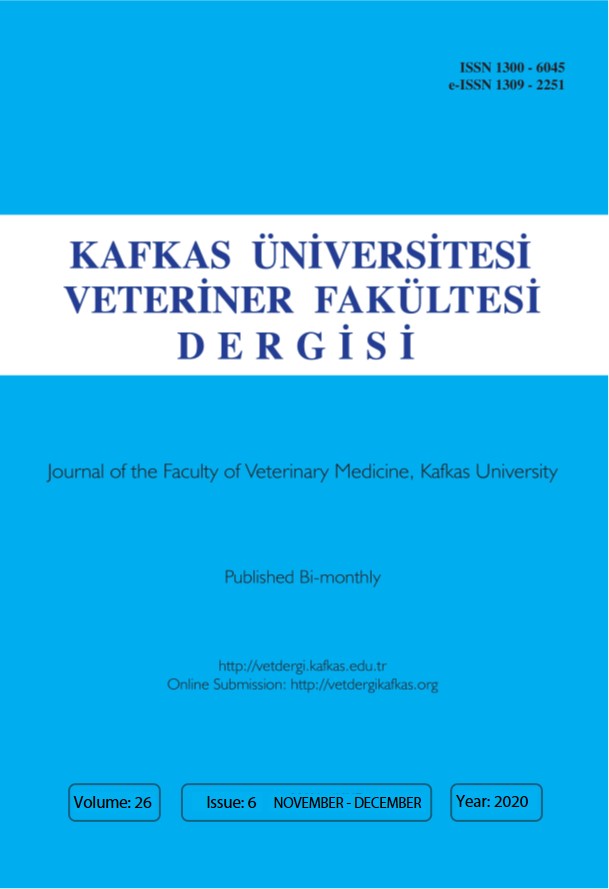
This journal is licensed under a Creative Commons Attribution-NonCommercial 4.0 International License
Kafkas Üniversitesi Veteriner Fakültesi Dergisi
2020 , Vol 26 , Issue 6
An Overlooked Entities in Small Animal Surgery: Splenic Disorders
1Istanbul University-Cerrahpaşa, Faculty of Veterinary Medicine, Surgery Department, TR-34320 Avcillar/ Istanbul - TURKEY2Istanbul Municipality Kısırkaya Temporary Animal Shelter, TR-34450 Sarıyer/Istanbul - TURKEY DOI : 10.9775/kvfd.2020.24551 The spleen, which has a vitally important function in the body, is located in the left part of the abdomen. The spleen"s primary tasks are hematopoiesis and immunity, such as the reservoir of blood cells and the production of the immune system"s defense cells. On most occasions -due to the lack of clinical manifestation- splenic disorders are coincidental findings at surgery despite their prevalence. Splenosis is a heterotopic autotransplantation of splenic tissue in other body compartments, which may be interpreted as a pathological entity through imaging techniques. Foreign substance accumulation, such as iron deposition, namely siderosis, may be monitored in the spleen due to the aging process. The pathologies of the spleen are mostly characterized by the enlargement of the organ (splenomegaly). Hemangiosarcoma is the most frequently encountered neoplasia in the spleen, usually metastasizing to the heart"s right atrium. Ultrasonography is the most commonly utilized diagnostic tool in splenic disorders. Besides, the magnetic resonance imaging (MRI) and computed tomography (CT) techniques may be applied. Whole blood, plasma, or both are prerequisites that should be kept at disposal in the preoperative approach to the splenic disorders. Surgical interventions of splenic pathologies include splenorrhaphy, partial splenectomy, and total splenectomy. Splenic injuries usually result from blunt trauma. Surgery is not an indication unless there is a life-threatening amount of blood loss. Splenic torsion, which is an acute disorder of the spleen usually encountered in deep-chested dog breeds due to gastric dilatation and volvulus presents a diagnostic challenge. Total splenectomy is the favored treatment of choice in the approach of the relevant conditions rather than splenic derotation. Early phase complications include hemorrhage, cardiac arrhythmia, and ischemia in the pancreas and gastric wall, and metastasis and gastric dilatation and volvulus appear as the complications of the postoperative course. This review has aimed to open a new gate to better understanding the importance and functions of the spleen in normal physiology and also aimed to share information about the diagnostic tools and guide through to apply appropriate surgical approach in term of disorders. Keywords : Splenosis, Hemangiosarcoma, Siderosis, Total splenectomy, Splenic torsion










